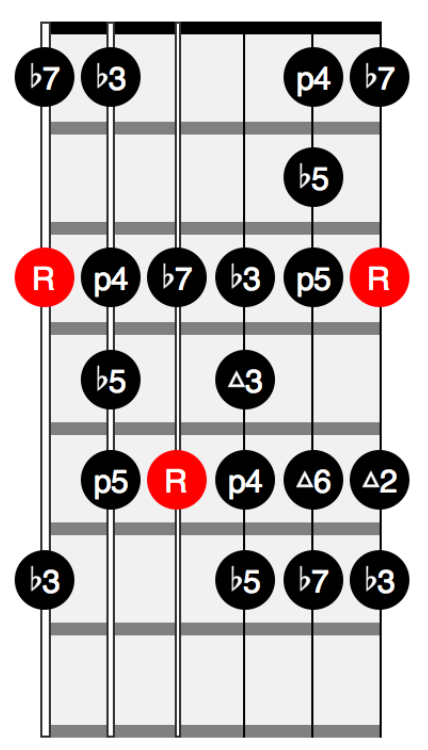Freddie King

Freddie King is probably my favorite blues player because of how adventurous he was combining major and minor sounds and just taking chances in general. He used metal picks on his fingers so he has a BLISTERING attack, and he used a lot of double stops to crate more melodic, chord based lines.
Freddie would constantly tease the major and minor 3rds, 7ths, and the b5. A signature thing he would do at the end of a form - like for the turnaround - would be to “tag” the completion of a lead with a major pentatonic. Classic and wonderful.
While Freddie doesn’t have a “box” like Albert and B.B., you can think of this approach as a manipulation of pattern 4 with all the alterations viewed as options, or possibilities. I call this Freddie’s “zone.”
The key here is to experiment with hammering on to the major third, but not always, teasing with the b5, but not always, and alternating between textbook minor and textbook major pentatonics.
Especially important to note: Switching to major pentatonic and playing the 9th (2nd) from the key center is a chord tone (5th) of the V chord. So Freddie would very frequently play minor over the I and IV chords, and then switch to major over the V chord emphasizing the 9th (2nd) from the tonic. Again - classic and textbook Freddie King.
Another HUGE part of Freddie King’s sound was Double Stops. This is when you play two notes from a triad to harmonize the scale and give it that bigger sound. The idea is to play pieces of the major and minor chords from the key center up and down the neck. For example: If in the key of A, he would often play two notes from A, Bmi, C#mi, etc. in the middle of his licks.
It can be confusing, but take a look at the triads I posted on the last page of the PDF and try messing around with them. If you need a refresher as to what chords are in a key, click here for how to build scales and refer to the chart in the PDF for the 5 most common keys in music. Remember - the I IV and V are Major triads, and the II III and VI are Minor. Don’t worry about diminished :)
